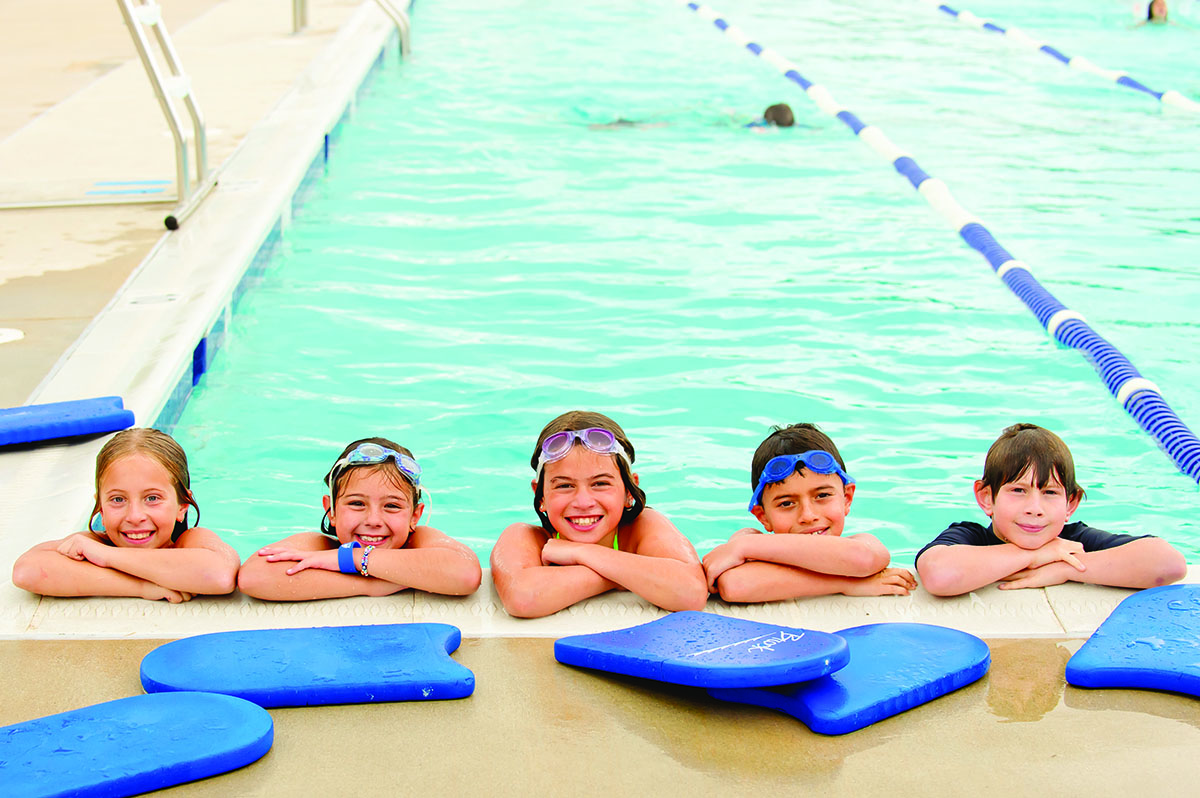With summer approaching, many of us dream of spendinglong, lazy, sun-drenched days at our community or backyard pools.
But daydreams can quickly turn into nightmares whenwe fail to take water safety precautions. According to the Centers for DiseaseControl and Prevention, drowningis the leading cause of death among children 1 to 4 years of age, with theexception of birth defects. Drowning also is the second-leading cause of deathsfor children between 1 and 14.
Fortunately, most pool site tragedies are preventable. “Parents of young kids must maintain supervision,” says Bill Kirkner, senior director of aquatics facilities and programs at the Jewish Community Center of Greater Baltimore.
Whenpool-related injuries or drownings occur, says Kirkner, “It’s typically notthat the parent isn’t providing [any] supervision, it’s about lapses in supervision. It’s ‘I justturned my head for a second’ or ‘I just answered a phone call.’ If you have todo something, the kid needs to come out of the water or another parent has towatch.”
Kirknerdiscourages parents from relying on lifeguards to constantly monitor their children.“Lifeguards aren’t babysitters,” he says. “They’re there to respond tosituations when they happen and to teach patrons about safety. They’reresponsible for dozens of people, and multiple emergencies can happen at onetime.”
Beware ofsudden changes in water depth, says Kirkner. “The most dangerous part of theJCC’s family pool is the transition between 3 and 4 feet,” he says. “The childis hopping up and down, and suddenly they’re in water above their head.”
Swimmingwith a “buddy who’s within arm’s distance” can help young swimmers stay safe, saysKirkner. Nevertheless, he notes, “There’s no substitute for parents being inthe water with their children.”
Swim lessons are a critical component of keeping children safe in the water, says Zachary Healy, general manager of Goldfish Swim School, a franchise in Owings Mills. Goldfish offers lessons for children from 3 months to 12 years old.
“Our goalis to teach water safety, teach kids to build up confidence and teach them thatswimming isn’t only something to do in the summer but also a sport,” Healysays.
One way inwhich Goldfish instructors teach water safety is through ‘social stories’ inwhich children are presented with a scenario and asked how to solve it. Forexample, says Sean Flanigan, vice president of operations and parent of twoGoldfish swim students, “The instructor might say, ‘What if you fell in thepool? What would you do?’”
While Goldfish takes safety seriously, the swim school is also designed to be a “fun destination,” says Flanigan. “A lot of kids quit swimming because the water is too cold, so we keep the [salt water] pool 90 degrees. We pay special attention to the lighting. It’s designed to be a bright, welcoming, tropical [environment].”
Goldfishalso has a swim team, offers open swims for the broader community and hostsbirthday parties.
At LifeBridge Health & Fitness, the children’s swim program begins with “Mommy and Me” aquatics classes for children from 6 months to 3 years old that are held in a pool heated from 92 to 94 degrees.
“For thisage group, we have parents and children in the pool together,” says HelenWhelan, program director at LifeBridge. “It’s a great way to get any childacclimated to the water.”
By ages 3and 4, children are usually in the pool without their parents. “This age is theprime age to get children to learn to swim,” says Whelan. “They’re at the pointwhere they understand their bodies and they can take direction and follow theinstructor’s lead. But the most key point — they’re still fearless!”
Whelansays children in the 3- to 4-year-old level learn to put their faces in thewater, blow bubbles, float on their backs, jump in and get themselves to the safetyof the side of the pool. In addition to six-week group lessons, LifeBridgeoffers private swim lessons for reluctant swimmers and those with special needswho aren’t comfortable taking group lessons.
The JCCand Goldfish also offer swim programming for children with special needs.
“It’srecently come to light that [children with autism] are at higher risk ofdrowning than other kids,” says Kirkner. To accommodate those students, Kirknersays the JCC is piloting a program of swim lessons geared to children on theautism spectrum.
AtGoldfish, instructors have worked with autistic children as well as those withother special needs. “We have a program called ‘Golden Learners’ for childrenwho need special accommodations,” says Healy.
Regardlessof swimmers’ abilities, instructors agree that it’s best to keep children inthe water all year-round.
“If achild has done really well in the summer, don’t stop,” says Whelan. “Give themlessons in the fall, so they can build on what they learned.”
For swimming safety tips, visit redcross.org/take-a-class/swimming.





